The ringed planet will be at its closest approach to Earth and its face will be fully illuminated by the Sun. It will be brighter than any other time of the year and will be visible all night long, but the best time to see is at 11:50 PM Sunday (CT). A medium-sized or larger telescope will allow you to see and photograph Saturn’s rings, banded atmosphere, and a few of its brightest moons.
The Sky Tonight Update: Saturn at Opposition
September 9, 2024By LASM Team























